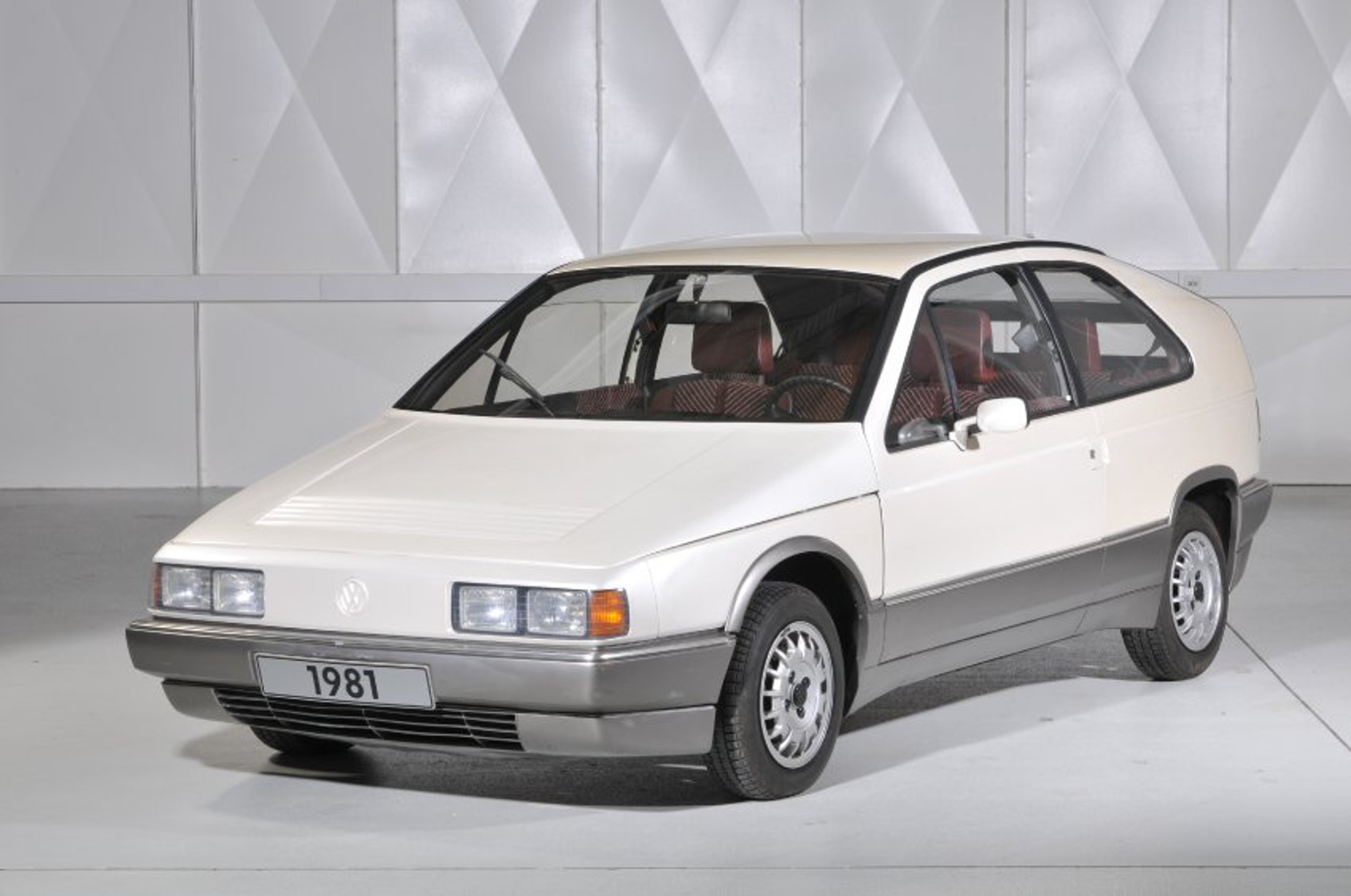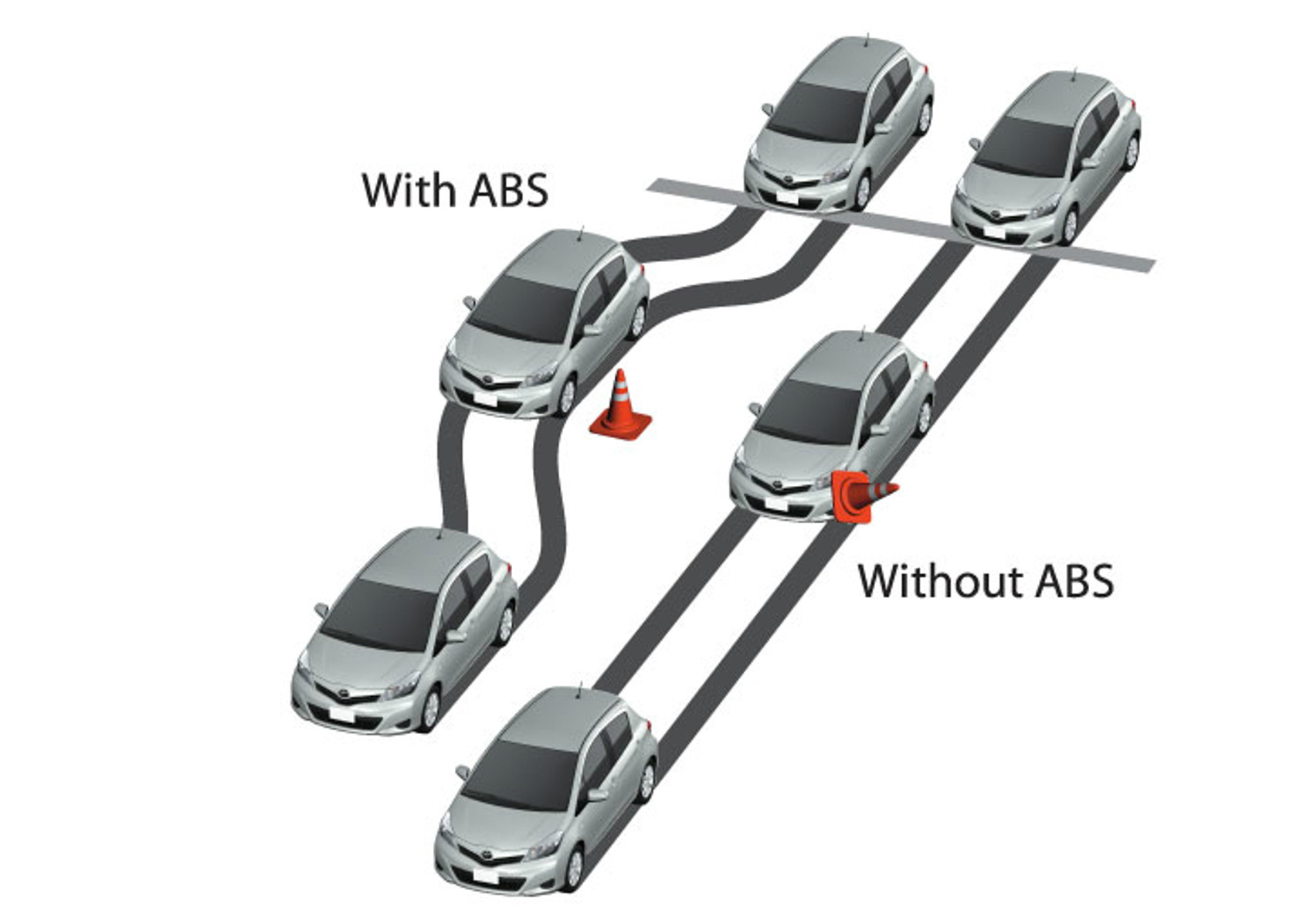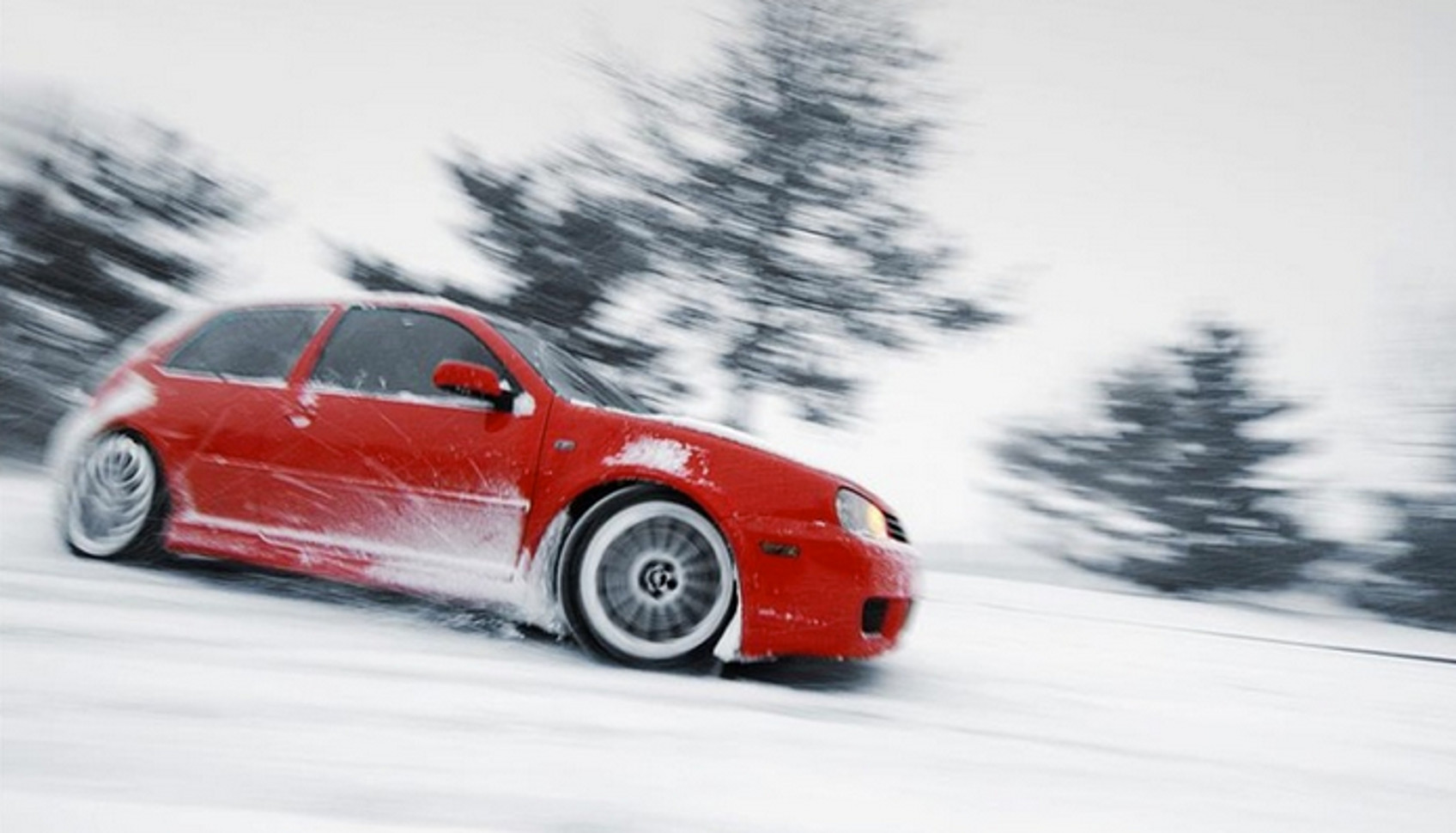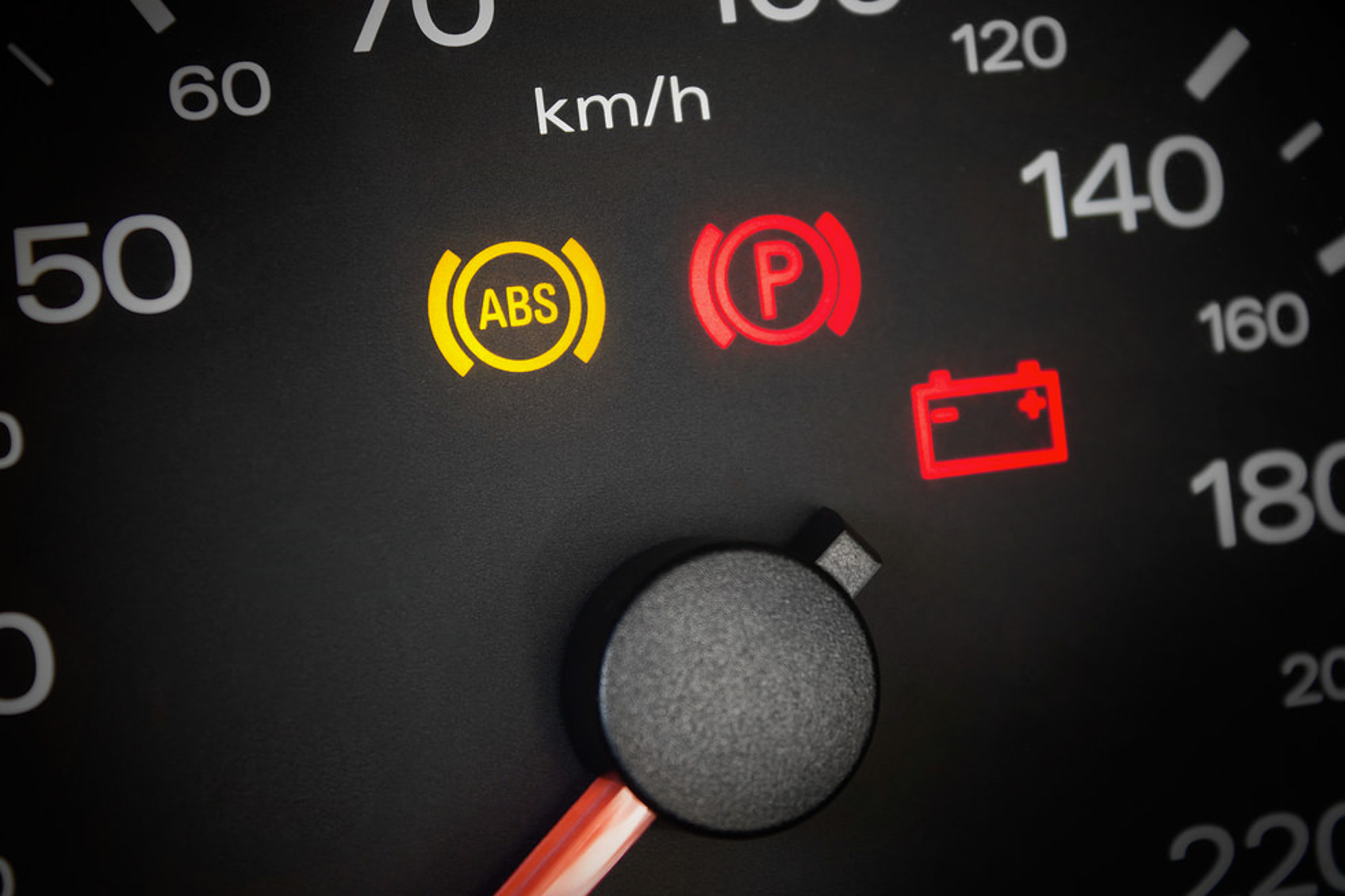Most cars from the mid-1990s onwards had an anti-lock braking system fitted as standard. But what is it, how does it work and what commonly goes wrong? We have all the answers about VW ABS systems…
If you want to reduce the risk of going through a hedge backwards in your car, your tyres need to remain in contact with the road. And that means not skidding. As soon as you lock up your wheels, traction goes out the window and your car will follow a trajectory that will inevitably end in a loud bang and expensive repairs. But how do you scrub off speed when you need to without losing grip? Well, that’s where ABS comes in…
Research and Development
Volkswagen first used anti-lock braking technology in its innovative Auto 2000 research vehicle (below) way back in 1981. It was referred to then as ABV but launched five years later as ABS in the Passat initially, the system resulting from a collaboration between Bosch and Continental Tyres. It subsequently featured as an option on the 1987 Mk2 Golf, these two cars being some of the first affordable mass-market vehicles worldwide, to be fitted with this safety system.

Steering clear of trouble
To be honest, the theory behind how ABS works is wonderfully simple. Sensors at each wheel detect how quickly it’s spinning and this information is sent to the ABS controller. If you stamp on the brakes, the sensor will detect the abrupt deceleration, send a signal to the controller and identify if there’s a risk of that wheel locking up. If that’s likely to be the case, it actuates valves to reduce hydraulic pressure to the brake on that wheel, allowing it to turn faster again.

The monitoring continues, so if it ends up spinning faster than the other wheels, braking pressure is increased again. Some systems apply and release pressure as often as 15 times a second. The result is a pulsing effect which makes locking any of the wheels virtually impossible, thus retaining traction whatever the circumstances. Even when steering, so the vehicle will try to maintain its composure even if you make the mistake of braking mid-bend. The recommended technique for drivers in an ABS-equipped car is to brake as hard as possible and, where necessary, steer around the obstruction. Here, it is thought the ABS will reduce the chances of a skid and subsequent loss of control.

Braking tradition
Of course, this ‘pumping’ or reapplication of the brakes is nothing new – expert drivers have been practicing the method of what’s known as cadence braking for ages. And actually, on an older car without ABS, you can do the same. If you sense the front wheels skidding, immediately take your foot off the brake, then reapply, repeating the procedure as necessary.
The first ABS system was developed for Concorde in the 1960s, and believe it or not the Ford Granada was the first production car to offer ABS as standard across the range from 1986.
Crash course in statistics
Since then, research suggests that ABS has reduced the risk of multiple vehicle crashes by 18 per cent. Interestingly though, it’s increased the risk of run-off-road crashes by 35 per cent. This is because on gravel, snow and sand ABS tends to increase braking distance. Ironically, under these conditions, locked wheels dig into the loose surface and stop the vehicle more quickly. With ABS, the only advantage is that while it might take longer to stop, the driver will maintain control and still be able to steer rather than go into a skid. Ice and very slippery surfaces can also confuse the ABS because it relies on detecting just individual wheels skidding, so if all four wheels lock at the same time, the system is defeated.

Constant evolution
These days, of course, VW ABS typically works in association with other gadgetry managing such things as traction and stability control. If there’s a loss of traction while accelerating, for example, the ABS wheel sensors will detect it and react accordingly. Two extra sensors, one to monitor the angle of the steering wheel and another to detect the direction the car is taking, control stability. If the two readings don’t coincide, in other words if the car is out of control, the necessary software will brake the individual wheels as necessary to restore order. Clever stuff, eh?

Common problems
The first sign that all’s not well with your VW ABS is likely to be the appearance of a warning light on the dashboard. Usually faults can be traced back to the magnetic wheel sensors or their wiring. Debris and brake dust can contaminate them resulting in the signal back to the controller being lost or unreliable. Thankfully, replacement sensors aren’t dear – you can buy front ABS sensors for the Mk4 Golf here for under £20. You’ll just need to carry out a diagnosis test to find out which one is at fault.
Ian
The opinions expressed here are the personal opinions of the author and do not necessarily represent the views and opinions of VW Heritage.


I have 3dash lights that come on sometimes when the road is a little wet.,
They are:
The ESP/ASR light stays on
The ABS light stays on
And the brake system light flashes.
Once ignition key off they go away and then only come on again mayb if road wet.
Any ideas. Mayb a sensor, or problem. ????
First, and best advice: *Always* get the codes read, using either VCDS (the new term for VAG-COM), or a generic code reader. But then read the following…..
This can be a strange fault as in where to look for the fault. The clue is in the that you say it occurs when it’s wet weather?
Look at the starter motor. See I told you this was strange! Just above the starter motor, i.e. sitting on top of it, is a connector with four wires, from memory. Check, check and double check the integrity of those wires!
Due to their location, especially if your undertray has been removed, or you don’t have one fitted, they get the full effects of road spray, corrossion sets in, and in some cases I’ve found that just touching them causes them to fall apart!
To repair them you can either buy the parts at a dealer, go to a scrapyard and cut out that part of the harness from a scrap car and then solder it into your car, or buy a waterproof four-pin connector from a well known autcion site. Or do what I do, and just cut the connector out, slicing back until I find nice clean wires and then solder in new wiring.
No more warning lights, and as a bonus you’ll find the system resets itself and doesn’t need the dealer to clear the codes.
i had modified my 2011 vw polo to 2015 vw polo. When I was driving the curve the EPC light and tyre pressure monitoring system come up and cruise control is not working after that. once ignition key off for 5 min all dash light goes off. i have check my car with vw dealer and told me i have to change the abs control unit. I was wondering whether 2011 abs control unit and 2015 abs control unit is same or not. Can i change it to 2015 abs module to 2011.
Before going to the expense of changing the control module I’d suggest two cheaper options:
1. Check/swap the brake light switch. This can cause issues such as those you mention.
2. Look in your area for companies that can test and repair the control module. This is far cheaper than a new module.
For example, two companies that I know of in the UK are ecutesting.co.uk and bbareman.co.uk.
Both guarantee their work. You simply remove the module from your car, and you don’t need to break into the hydraulic circuit to do that, so no brake bleeding afterwards, and then post the unit to them. They will test the unit, repair if required, and then post it back, usually within 48hrs.
These are just suggestions, I am not associated with these companies in any way at all.
I am driving city golf 1.4 curbareter 2000 model but now it indicate only to the left side so what might be the cause as the flasher unit is ok?
Abs and eps light on changed all parts but still on
Nicky, see my reply above to an earlier post. This is becoming a more common problem
My car a vw golf lights on my dash board keep coming up on the triangle one first it starts flashing and locking up my wheels while driving in dry conditions then the abs light and a couple of other lights start flashing…ive had to stop many occasions to push my breaks to get it going ….then in a drive it kept doing it had taken it to a mechanic many times …they have it sitting then they drive it then it wont …but as i take it for along drive it starts again…it is at the mechanics now going on four weeks…i have now been told it could have to go to another mechanic and it could cost me a $1000 nz dollars or more to fix but they havent a clue what maybe wrong with it ….as hes not sure whats going on with my car …please if anyone may have a solution for whats happening please let me know
It’s very tedious if you’re not rich and have an older car. Had wiring problem then two weeks later the sensor failed. I also have a mk2 gti which has just enough gadgetry no bags abs whatever and an old school drive, it’s a sweet ride💓